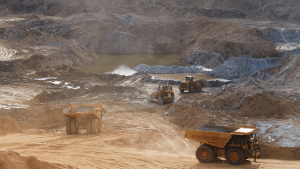Death toll from Afghanistan earthquake exceeds 2,000

Afghanistan’s deadliest earthquake in years has claimed over 2,000 lives, with rescuers still recovering bodies from collapsed buildings, according to The National via AFP on September 4th.
A spokesperson for the Taliban authorities, Hamdullah Fitrat, reported that hundreds more bodies have been recovered in the worst-hit area of Kunar province, where many villages are remote and nestled in river valleys. He confirmed the death toll of 2,205 and that 3,640 people suffered injuries.
A 6.0-magnitude earthquake struck near Afghanistan’s border with Pakistan on August 31st. The quake initially flattened homes, and the subsequent aftershocks in the following days caused more panic and blocked roads, with the death toll having been expected to rise from the earlier estimate of around 1,400 made on September 2nd.
A massive rescue operation, organised by the Taliban authorities and the UN, has been underway in areas struck by the quake. The UK and UAE are among several countries to commit to sending aid, with the UK setting out out financial aid and the Emirates Red Crescent supplying medical provisions and shelters. However, rescue efforts have been hindered due to limited access to the mountainous regions.
The World Health Organisation (WHO) said on September 3rd: “Many survivors are still believed to be trapped beneath collapsed homes in remote villages, and the window for finding them alive is rapidly closing.”
In October 2023, a 6.3-magnitude earthquake struck the country, where the Taliban authorities claimed at least 4,000 died, while the UN estimated a death toll of around 1,500. Common natural disasters such as these are made worse by poor infrastructure, which is still fragile after decades of conflict, which hampers emergency relief efforts.
The WHO has warned that local healthcare services are “under immense strain” after the recent disaster, with critical shortages of trauma supplies, medicine, and personnel. The agency is seeking $4 million to deliver life-saving health interventions and extend mobile health services. The depletion of emergency stockpiles and resources has been strained by funding cuts to US aid in January. Aid workers describe the earthquake as a crisis within a crisis, as Afghanistan contends with Taliban rule.
“Every hour counts,” said Jamshed Tanoli, a WHO emergency team lead in Afghanistan. “Hospitals are struggling, families are grieving, and survivors have lost everything.”
The country is already grappling with a grave humanitarian crisis surrounding chronic food insecurity, widespread poverty and severe drought. The country has been under further pressure following the return of Afghans expelled by neighbouring Pakistan and Iran since the Taliban’s takeover of the country in 2021.
UN refugee chief Filippo Grandi stated that the disaster has impacted over 500,000 people in east Afghanistan. Even with this latest catastrophe, Pakistan launched a renewed drive to expel Afghans, with over 6,300 people crossing the Torkham border in Nangarhar province on September 2nd.
The National via AFP, Maghrebi.org
Want to chase the pulse of North Africa?
Subscribe to receive our FREE weekly PDF magazine














